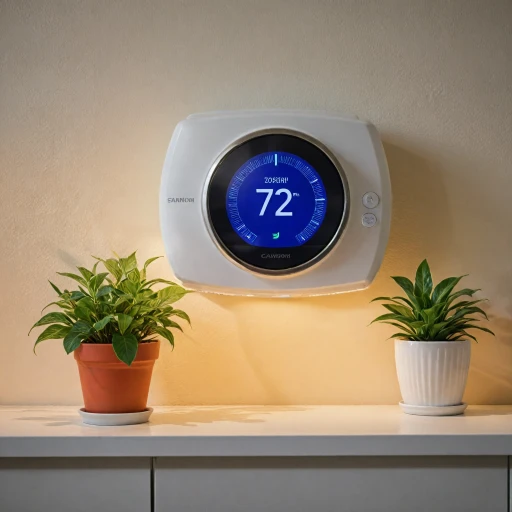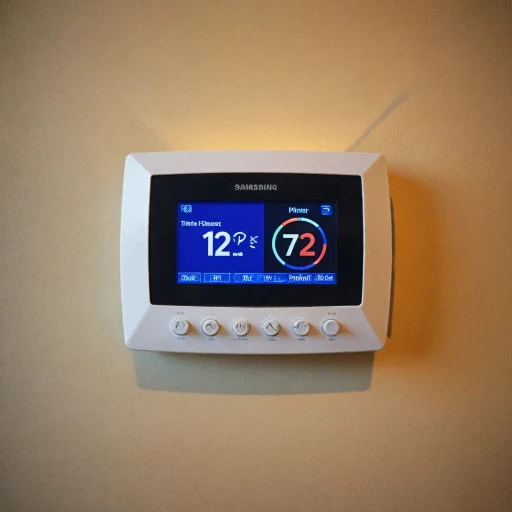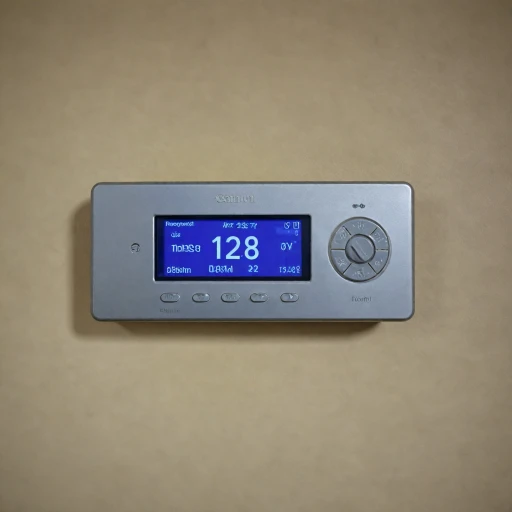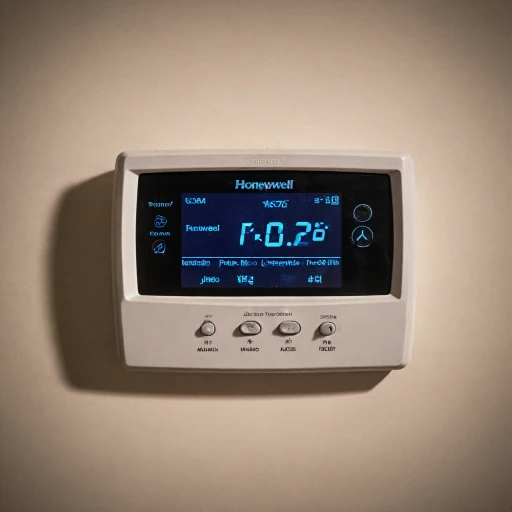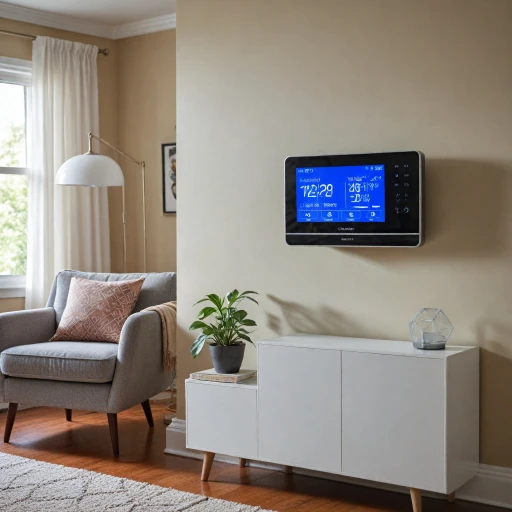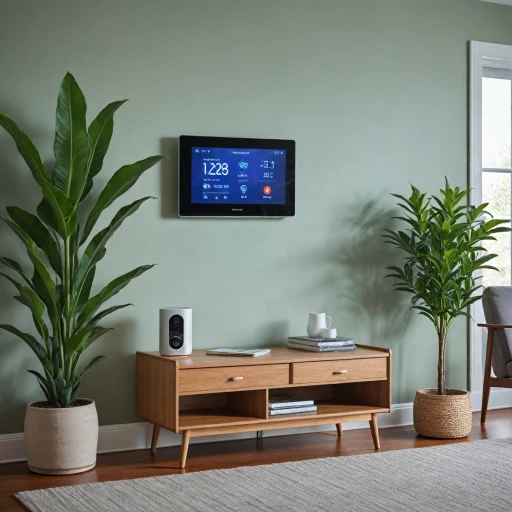
Understanding Remote Sensors in Smart Thermostats
Exploring the Role of Remote Sensors
Smart thermostats have revolutionized how we control the temperature in our homes, offering convenience and efficiency like never before. One groundbreaking feature is the inclusion of remote sensors, which enhance the thermostat's ability to maintain a comfortable environment. These sensors work by providing more accurate temperature readings from different areas of your home, allowing the thermostat to make precise heating and cooling adjustments. Remote sensors can significantly boost the effectiveness of your thermostat. With these devices, smart thermostats such as the Ecobee and Honeywell models receive temperature data from various locations, ensuring a more even distribution of warmth or coolness. This feature is advantageous in homes where a single thermostat positioned in a hallway might fail to represent other regions like bedrooms and living rooms accurately. It maximizes your home's comfort by monitoring and adjusting the environment based on occupancy and temperature changes in real-time. Moreover, incorporating remote sensors can lead to notable energy savings. By optimizing heating and cooling according to actual room usage, smart thermostats like the Nest Learning model avoid unnecessary energy consumption. This leads to an eco-friendly home and potential cost reductions visible on your energy bills. Many modern thermostats work seamlessly with technology like Alexa and Google Nest. This integration enables you to control your thermostat with voice commands and enjoy greater convenience. If you're curious about further optimizing your home’s comfort, consider reading more about enhancing home comfort with an attic fan and thermostat. Remote sensors play a crucial role in creating a balanced and comfortable living space, showcasing the amazing potential of smart home technology.Benefits of Using Thermostats with Remote Sensors
Increased Comfort and Efficiency
Incorporating remote sensors into smart thermostats can significantly enhance both comfort and energy efficiency in your home. By strategically placing these sensors around the house, the thermostat can better monitor temperature variations and optimize heating and cooling distribution. This ensures a more even and comfortable climate across different zones, addressing common issues like cold spots that can occur with traditional thermostats.Energy Savings Potential
Leveraging remote sensors with your thermostat can also lead to notable energy savings. By providing accurate real-time data, these sensors empower the smart thermostat to make more efficient decisions about when to heat or cool specific areas. Brands such as ecobee and Google Nest incorporate this advanced sensor integration, offering significant energy savings potential by preventing overuse in unoccupied rooms. As a result, homeowners can enjoy decreased utility bills without sacrificing comfort.Improved System Control
The addition of remote sensors provides users with superior control over their home's climate system. With the ability to communicate with smart home platforms like Amazon Alexa or Google Nest, these thermostats work with voice commands and integrate seamlessly into your existing smart home ecosystem. The remote access feature allows you to adjust settings from anywhere via your smartphone or tablet, providing convenience and flexibility. For those interested in enhancing their home setup with advanced climate control, considering the role of remote sensors in thermostats can be invaluable. For more insights, explore this link.Installation and Setup of Remote Sensor Thermostats
Setting Up Your Smart Thermostat with Remote Sensors
Installing a smart thermostat with remote sensors can be a straightforward process, but it requires some attention to detail to ensure optimal performance and energy savings. Here’s a step-by-step guide to help you through the installation and setup process:
- Choose the Right Location: The placement of your thermostat and remote sensors is crucial. Ensure the thermostat is in a central location away from direct sunlight, drafts, or heat sources. Remote sensors should be placed in rooms where you want to monitor the temperature more accurately, like bedrooms or living rooms.
- Install the Thermostat: Turn off power to your heating and cooling system. Remove the old thermostat, and mount the new smart thermostat according to the manufacturer’s instructions. Brands like Ecobee, Honeywell, and Google Nest provide detailed guides to assist you.
- Connect to Wi-Fi: Most smart thermostats require a Wi-Fi connection for remote access and control. Follow the on-screen instructions to connect your device to your home network. This step is essential for integrating with platforms like Amazon Alexa or Google Assistant.
- Pair Remote Sensors: Once the thermostat is set up, pair the remote sensors. This usually involves placing the sensors in their desired locations and following the pairing instructions provided by the manufacturer. Ecobee smart thermostats, for example, have a straightforward pairing process.
- Configure Settings: Customize the thermostat settings to suit your preferences. Set schedules, temperature ranges, and energy-saving modes. Many smart thermostats, such as the Nest Learning Thermostat, offer intuitive interfaces that make this process user-friendly.
- Test the System: After installation, test the system to ensure everything is working correctly. Check that the thermostat communicates effectively with the remote sensors and that the heating and cooling systems respond appropriately.
For more detailed guidance on optimizing your system, consider exploring resources on optimizing electric baseboard heating with smart thermostats. Proper installation and setup can significantly enhance your home comfort and energy efficiency, making it a worthwhile investment.
Comparing Popular Thermostat Models with Remote Sensors
Leading Models that Enhance Home Comfort
In the realm of smart thermostats featuring remote sensors, several models have emerged as leaders thanks to their innovative technology and user-friendly features. Each brand provides unique benefits tailored to different homeowner needs, focusing on maximizing comfort and energy savings.
Ecobee Smart Options
The Ecobee smart thermostat is renowned for its advanced sensor technology. Equipped with remote sensors, it ensures precise temperature settings in each room, enhancing overall comfort. Additionally, the Ecobee integrates seamlessly with Amazon Alexa, allowing voice control for a hands-free experience. This compatibility extends to energy savings, as the system can intelligently adjust settings based on user preferences and occupancy patterns.
Nest Learning Capabilities
Another contender is the Nest Learning Thermostat. The Nest product line, including the Google Nest variants, combines the convenience of remote sensors with a learning approach that adapts over time to your temperature preferences. This adaptability ensures optimal comfort while promoting energy-efficient habits. The touch interface on Nest thermostats offers an intuitive experience, complemented by comprehensive control through Google Assistant and Amazon Alexa.
Honeywell's Solution to Comfort
Honeywell offers a range of thermostat models that work effectively with remote sensors. Known for reliability, Honeywell thermostats provide precise temperature control across different zones in a home, integrating with other smart home devices for enhanced comfort. Their competitive price point offers substantial energy savings without compromising on features.
Weighing Comfort Against Cost
When choosing between these smart thermostats, consider the balance between comfort and cost. The initial investment in a premium model may seem steep, but the potential savings on heating and cooling bills can offer a significant return over time. Furthermore, models that work with remote sensors and learning capabilities provide customization that aligns with personal comfort needs, ultimately creating a more enjoyable home environment.

